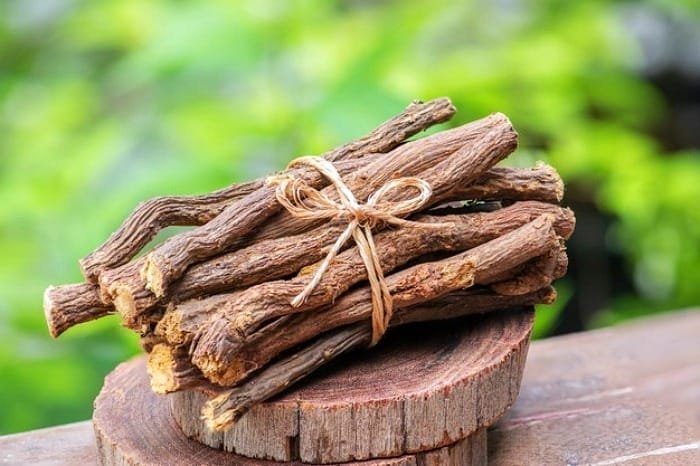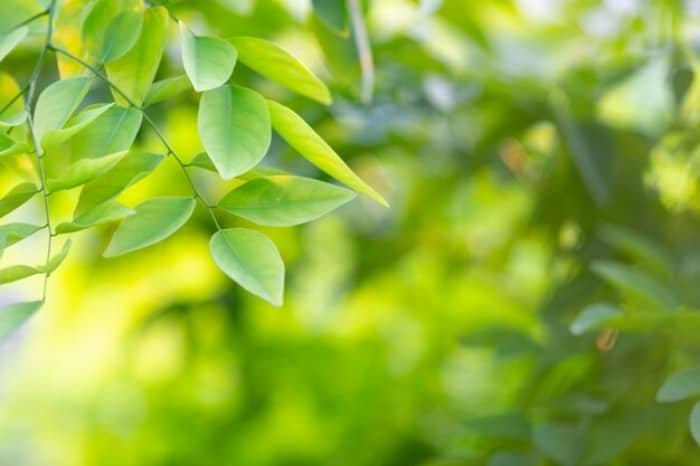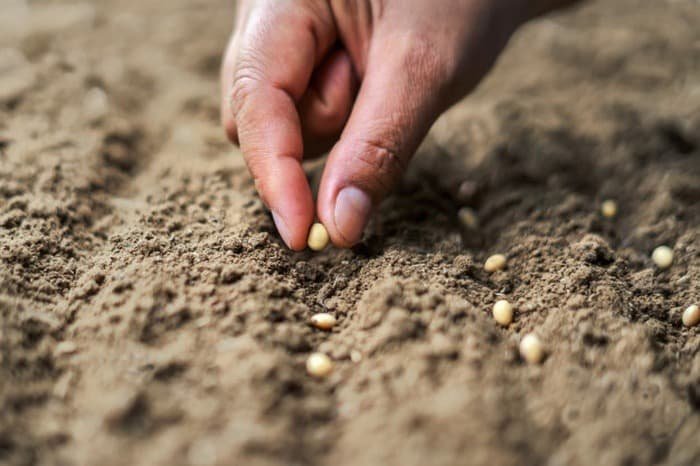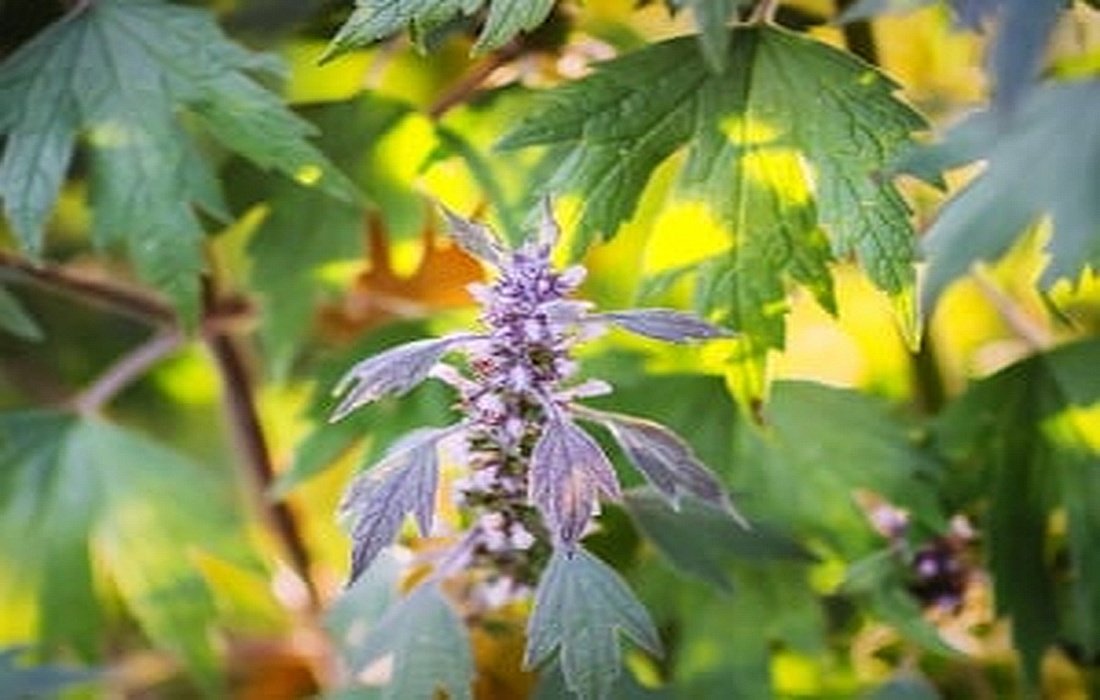Getting to know the “licorice” plant and methods of propagation and cultivation.
Licorice, scientifically known as Glycyrrhiza glabra, belongs to the family ofmedicinal plants.This herbaceous plant is native to southern Europe and parts of Asia; it is primarily propagated through seeds and has been cultivated for its medicinal properties since ancient times.
This herb has a history dating back four thousand years; it often grows wild and does not require planting. However, some people choose to plant it at home for its healing properties. In this section ofSelMagz,we aim to introduce you further to the properties and cultivation methods of this plant.
Why is it called licorice?Licoriceis so named because its roots have a sweet flavor, which is due to the presence of a substance called
glycyrrhizin.This substance is 50 times sweeter than sugar. However, its taste is different from sugar, and the sweetness lingers in the mouth longer. The root of this herbaceous plant is the most important part and can grow up to one meter. This plant is truly miraculous in treating some ailments.The nature of licorice.

Licorice has a dry and warm nature, and it is noted for its ability to alleviate bladder pain and increase longevity. It can be used in cooking, such as making
rock candyandconfectionery,and can also be used to flavor and scent tobacco.Appearance characteristics of the licorice plant.
This perennial plant has stems that range from 0.5 to one meter in height and can reach up to two meters in suitable environments. The leaves are alternate, consisting of 4 to 7 pairs of leaflets and a terminal dull green leaflet.
Licorice flowers are irregular and come in yellow, purple, and white colors, growing on a stem beside the leaves. The flowers can reach over 1 centimeter in length. The fruit is a pod containing 3 to 6 bean-like seeds (sometimes fewer) that is light brown.
The fruit is 2 to 3 centimeters long, with narrow and pointed sides.The weight of a thousand seeds is 10 grams, and they have a thick and sturdy shell. The length of the plant’s root varies based on its growing location, plant type, and climatic conditions, ranging from 30 to 60 centimeters. The roots and rhizomes of licorice are woody and creeping, shaped like cylindrical pieces, with a diameter ranging from 0.5 to 1.5 centimeters, and their cross-section is light yellow.The central part of the cross-section may be slightly darker. The outer surface shows longitudinal grayish-brown lines, and remnants of old buds can also be seen on the rhizome pieces.
Necessary conditions for cultivating licorice.
This plant requires a lot of light and thrives in warm and sunny conditions. Sufficient light increases the active substances in the roots. Licorice roots spread best in sandy soils with good thickness, which increases their yield.
The suitable temperature for growing licorice is between 6 to 25 degrees Celsius. This plant requires adequate nutrients and water. Sufficient water must be provided during flowering. The best areas for growing licorice have annual rainfall between 400 to 1160 millimeters, and the suitable soil is sandy land rich in calcium compounds with thick layers. The soil pH for licorice should be between 5.5 to 8.2.
How to plant licorice.
Planting licorice through seeds is the simplest method; root division is another method, but it is used less frequently. However, it is still a suitable method.

Planting licorice by dividing roots.
In the fall, dig up the tubers of three to four-year-old plants, and cut them into pieces of 15 to 25 centimeters.
Then, plant these pieces in rows with a spacing of 60 to 80 centimeters.
- The suitable distance between the tubers when planting is 30 to 40 centimeters.
- After planting, water deeply.
- Planting licorice using seeds.
- Spring is the best time to plant licorice seeds. First, soak all the seeds in water for a day before planting.
Then, plant them in a greenhouse bed or seed tray and water them.
- Until the plants reach the germination stage, you should water them regularly every day.
- After a while, once you notice the plants starting to sprout, growth will begin.
- Once the plants have grown sufficiently, transplant them to the main field by late spring or early fall.
- It’s worth noting that in spring, you can plant the seeds directly in the main field.
- The main needs of the licorice plant.
- Like other plants, licorice requires a set of principles and favorable climatic conditions for care, which we will examine further.
- Soil requirements for licorice.
Since the licorice plant has long roots, it should be planted in deep soil. In the fall, add 30 to 40 tons of well-rotted animal manure per hectare, then deeply plow the soil (to a depth of 40 to 70 centimeters) and add 50 to 60 kilograms of phosphorus oxide per hectare to the soil, then level it out and prepare the ground for planting.

Appropriate watering for licorice.
In areas with rainfall below 400 millimeters, watering should be done early in the planting process; otherwise, rainfed cultivation should be used. Depending on the region’s situation, the irrigation cycle varies between 7 to 10 days. Interestingly, the water needs of the plant reach zero in the fall and winter.
Appropriate temperature and humidity for licorice.
This plant requires adequate moisture for proper growth and typically grows in sunny and semi-shady environments.
Crop rotation of licorice.
Since licorice remains in one location for almost 10 to 15 years and its initial growth is slow, it should be rotated with plants that do not promote weed growth. The most suitable plants for crop rotation with licorice are leguminous plants.
Time and method of harvesting licorice.
If licorice has been propagated by division, it can be harvested three to four years after planting; however, if planted from seeds, the roots can be harvested five to six years post-planting.
The best time to harvest the roots is after the above-ground parts have dried due to the cold in the fall. Small areas of roots can be harvested by hand, while larger operations use specialized machinery for harvesting this plant’s crop.
Since the active substances in licorice are soluble in water, the roots must be washed as quickly as possible with running water. After cleaning, the bark of the roots should be removed, and then they should be cut into pieces of 10 to 15 centimeters and dried. Direct high-temperature sunlight should never be used for drying. If you use electric dryers, the best temperature is 40 degrees Celsius.
What are the benefits of licorice?
Sucking licorice roots can significantly heal mouth sores and inflammation.

Gastritis
- and
- shortness of breathcan be alleviated with licorice.This plant strengthens theeyes
- and alleviatesheadaches.If you include licorice in your diet, it will significantly impact yourweight loss.Using licorice infusion to wash your hair will greatly help with
- split ends.To eliminate bad odors from underarms and feet, you can make a medicinal ointment with licorice leaves and apply it to those areas for it to take effect.This plant is used in traditional medicine to treat muscle spasms and swelling,
- bronchitis,rheumatism,and joint swelling.
- Since this plant is effective in treating coughs, its extract is used in cough syrup formulations.
- This plant is also a diuretic and has antibacterial properties.Other incredible properties of licorice root and stem.In addition to what you’ve read, this plant has other benefits including:Treating skin inflammation and infections with licorice.Licorice root helps treat eczema that causes itching, redness, flaking, and inflammation. Licorice root extract is very effective against bacteria that can infect the skin. According to a study published in the Iranian Journal of Medicinal Research, this study showed antimicrobial activity against Staphylococcus aureus, which can cause skin infections such as
- cellulitisand folliculitis. In this study, researchers used extracts from the leaves and roots of the plant.Treating stomach discomfort and
- stomach ulcers.
Since licorice contains glabridin and glabrene extracts, it is very effective in relieving stomach discomfort. This extract leads to reduced stomach pain,
nausea,
and
heartburn.Research indicates that licorice extract helps eliminate Helicobacter pylori, a type of bacteria that causes stomach ulcers.Preventing
tooth decaywith licorice.
Research has shown that licorice helps eliminate the bacteria in the mouth that causes tooth decay. While licorice has demonstrated antibacterial properties in the lab, human studies have yet to confirm its ability to combat any factors involved in decay.Treatingsore throatswith licorice.One of the important compounds in licorice, glycyrrhizin, significantly reduces inflammation in the respiratory tract. This effective compound prevents the growth and effects of most harmful viruses; therefore, it is used in medications for respiratory diseases and works well to relieve symptoms like coughing and

sore throat.This plant helps thin mucus, ultimately opening airways. Indeed, licorice plays a vital role in destroying viruses that threaten the airways.Side effects of licorice.
Every plant, depending on the compounds and elements in it, has a series of side effects that you must be aware of to prevent potential issues by adhering to guidelines. To this end, we will discuss several side effects of this plant below.
The amount of licorice consumed depends on the conditions that require treatment. However, very high amounts of licorice should never be used, as excessive consumption of licorice may lead to many side effects.People withhigh blood pressure
should completely avoid consuming excessive licorice and glycyrrhizin supplements.Excessive licorice consumption leads to decreasedpotassium levels.
According to the U.S. Food and Drug Administration (FDA), this can cause side effects such as lethargy,
irregular heartbeat, swelling,
- high blood pressure,
- and congestive heart failure.Pregnant women should avoid consuming licorice in high amounts. Studies have shown that glycyrrhizin in licorice can harm the developing brain of thefetus
- and lead to cognitive problems after birth. An older study also indicated that excessive licorice consumption duringpregnancycan cause premature birth.How to consume licorice root.To easily include licorice in your diet, you can use it as tea orherbal infusions.Licorice is also available in the market in forms like capsules, chewable tablets, powder, liquid extracts, and licorice syrup.
- How to prepare licorice infusion.To prepare licorice tea, first grind 50 grams of peeled licorice root and then add it to one liter of boiling water and let it steep for 10 minutes; after steeping, you can drink it.Licorice root.The taste of licorice root.Storing licorice.
Conditions for storing licorice.
Seed planting.Licorice seed planting.Harvesting licorice.
Time for harvesting licorice.
Stomach ulcers.
The effect of licorice on stomach ulcers.







